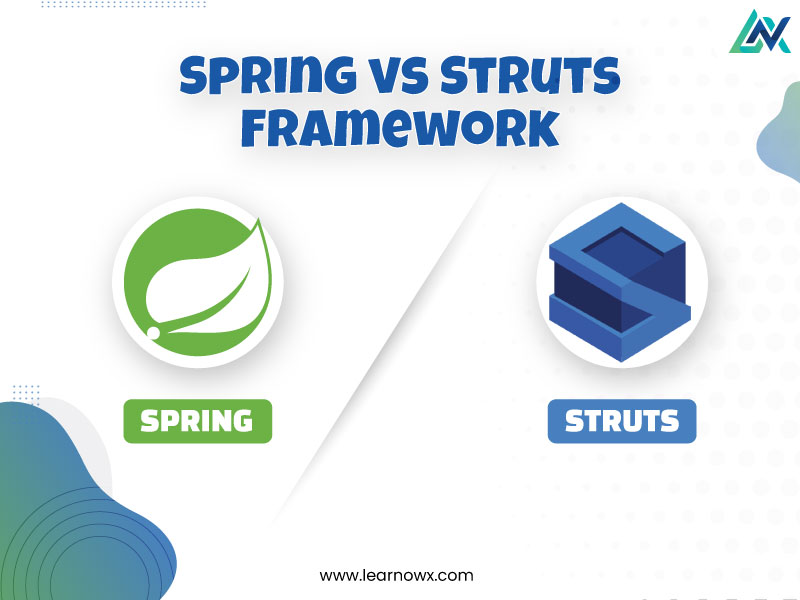Sharing is caring!
What if we ask you which is the most used programming language in today’s world? Python, Java, C++? Well, many programming languages come to our minds as per their usage. But as we all know, Superman is only one, and so is the best programming language. Java is the world’s most used programming language today, with more than 33% of developers relying on Java for development purposes and using frameworks like Spring and Struts. Hence, understanding Spring vs Struts framework is very important for their proper use in developing applications.
With this in mind, many software engineers nowadays look for Java programming courses for the best Java Training. Considering every software engineer is trying to contribute to the platform, it’s not surprising that this technology has so many frameworks and updates to use.
But, with so many frameworks and updates, which one to use becomes confusing for the best outcomes. Today, in this blog, we will discuss the much in use Spring and Struts Java Frameworks; what are their features, pros and cons and which one is better?
So, without any further ado, let us understand Spring vs Struts in-depth.
What is Spring?
To begin, Spring is an open-source Java Framework taught as a major in the Java course. Java applications created are portable, testable, and modular with the aid of Spring. Also, used with J2EE, aka Java Enterprise Edition applications, for developing web applications.
Hence, with the use of Spring, the infrastructure is managed, and the programmes are reusable, making them testable, thereby, improving the application’s performance.
Also, two new concepts were introduced that were not present in the original specification: dependency injection (DI) and inversion of control (IoC). The Spring Ecosystem contains several solutions, such as Spring Boot, Spring Cloud, Spring Data, Spring Security, etc.
Features of Spring
The key features of Spring are :
- Java objects are configured and managed easily with the Framework’s core element – IoC Container.
- Developers can store persistent data by using JDBC and Hibernate with Data Access Framework.
- The Model-View-Controller architecture is used to develop web applications with the MVC Framework.
- Unit and integration testing is possible with TestContext Framework.
Advantages of Spring
- Lightweight
- Flexible
- Reusable
- Easily testable code
- Easily integrable into other programs
Disadvantages of Spring
- Pretty complex
- Less stability
- XML knowledge is required
- Difficult to learn for new developers
Now let’s learn about Struts in detail.
What is Struts?
Struts is also an open-source Java Framework. The MVC model, which stands for model-view-controller, is its architecture.
Hence, the Struts framework simplifies web application development and maintenance by providing predefined functionality. Additionally, it facilitates code extension, debugging, and understanding.
Thus, used for developing enterprise-edition web applications. Based on a request-based framework, it has a request handler and a response handler for handling user requests. Struts support AJAX, REST, and SOAP.
Features of Struts
- It supports receiving form inputs or monitoring action classes using any Plain Old Java Object (POJO).
- Different types of functionality are developed with Struts using a tag library, including data entry, URLs, and property statements. If you know HTML, CSS and XML, that is enough.
- Seamless integration with other technologies is possible such as Spring or SiteMesh, which helps developers leverage all the features in the development process.
- The Struts framework supports multiple view options, such as Velocity, JSP, Freemarker, etc.
Advantages of Struts
- Design is Simple
- High testability
- Simplified ActionForms
- Many view options
- Best tag features
Disadvantages of Struts
- Difficult to learn
- Poor documentation
- Less transparency
- Compatibility issues
- Single servlet
Understanding Spring vs Struts Framework
Spring Framework
Strut Framework
Lightweight Framework. |
Tag library is not supported. |
Layered MVC Architecture. |
Easily integrable with ORM technologies. |
Modules are loosely coupled. |
Heavyweight Framework. |
Tag library is supported. |
Doesn’t have layered architecture. |
Supports Manual Coding only. |
Modules are tightly coupled. |
When to use - Spring or Struts?
Well, in the final analysis, the usage depends on the need. If you want to develop a serverless web application, use Spring. On the other hand, if you want to develop a web application based on servlets and JSP or legacy applications, use Struts.
Last but not the least, an exciting thing to know, Spring is used by the tech giant – Netflix for reliable and high-level performance.
Bottom Line
To summarize, Both Spring and Struts have pros and cons, and as per the need, they can be used effectively in the development process.
Finally, want to learn in-depth about Spring or Struts open-source frameworks or the whole Java Programming language? No need to worry. Team LearNowX has got you covered.
Our experts at LearNowX provide in-depth insight into the Java Programming language and its different Frameworks. Our team aims to provide the best Java programming course for beginners to help them rapidly enhance their careers. Connect with us to learn in detail about the best programming languages, and let us help you conquer the world of programming like no other.
That’s all we have today. We hope this blog has given you a better understanding of the Spring vs Struts framework.
To stay updated with our training courses & programs, don’t forget to follow us on LinkedIn, Instagram, Twitter, & YouTube.
Let’s learn and nurture together. Thank you for reading!







